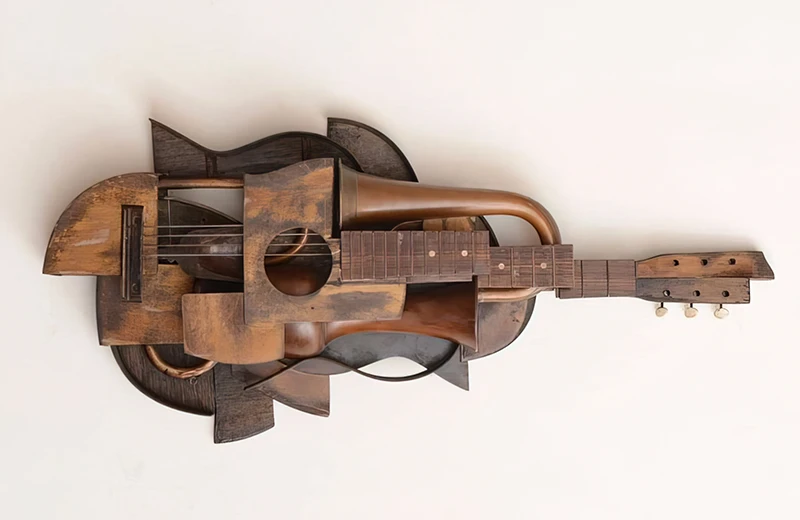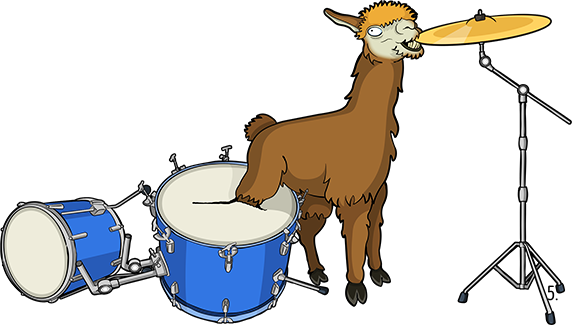It may be an unfamiliar premise to some, but I am fervently of the opinion that the goal of recording audio is to accurately capture and faithfully reproduce a particular sound. Not to fuck around with it, contorting it into something that only dimly represents what was originally going on, but to trust in the natural character of an instrument and the preference of its performer. After all, they picked it, they like it, and it would be too presumptuous of me to think that an arsenal of boring plugins can make it sound “better”. If the musician has competently selected their desired tone, there’s no reason for me to come along and masturbate all over it.
Standard practice for most has always been to shove an SM57 in front of the cabinet, but this has always struck me as less than optimal because I’ve never been satisfied that the recorded sound is anything like that which is coming from the amplifier in the live room; simply a tinny, flat, weird imitation of such. I guess this is where most would plump for their mouth-watering collection of candy-store plugins – and boy, don’t they look sweet, with vintage-effect GUIs that totally make it look like you’re doing something all technical and impressive. Careful though, because more often than not all they do is rot your teeth and give you a stomach ache.
No, for me the solution is not to use a weird sounding mic and then crack out a virtual rack full of plugins in an attempt to de-weird it, but instead to find the correct microphone choice and placement in the first place, such that I am confident that I am doing what I am actually being paid to do; make a faithful recording with minimal post-recording fuckery. My approach to recording a guitar amp has always been to use a combination of microphones – one dark and one bright – phase aligned and blended such that as true a representation of the amplifier sound as possible is produced. However, I must confess that I’ve never actually put this to the test in any evidential sense. Is this really best? Or am I missing a trick with the favoured SM57 microphone that so many seem to opt for?
So, with this in mind, I recently performed an experiment that I have been wanting to carry out for some time; that is, what is the best way to make a guitar sound like a guitar? Or more specifically, how can one best reproduce the sound of a guitar + amplifier through the control room speakers? With that question burning in my mind, I set to work.
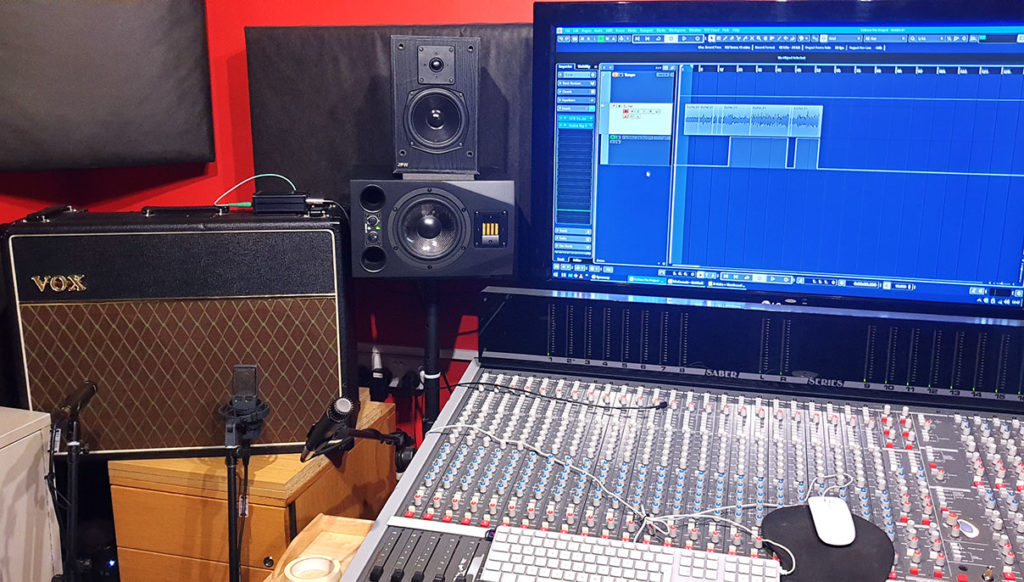
First off, I used an amp that I know to be very characterful, very harmonically rich – a Vox AC30. I positioned it right next to the studio speakers and recorded a DI’d guitar into the computer. This signal could then be fed back into the amp so as to provide a faithfully replicable guitar performance to serve as the basis for my subsequent microphone comparisons. Next, I set up two mic stands in front of each speaker of the amplifier, in order to position microphones with their diaphragm aligned 15-16cm perpendicular to the centre of each cone, which is standard practice for me. I should note at this point that I did try some preliminary placement tests (which I didn’t actually record) — I tried the mics further back, but they sounded too distant, I tried them closer but they sounded too boomy, I tried them off axis, at the side and at the back of the amplifier, but ultimately concluded that such positioning is not particularly helpful in reproducing anything like a natural tone, and meandering further down this avenue ultimately isn’t very constructive. It all just sounded increasingly alien. Besides, sticking to a normal and fairly predictable methodology would be useful enough to ascertain which microphones were ultimately producing a more convincing sound.
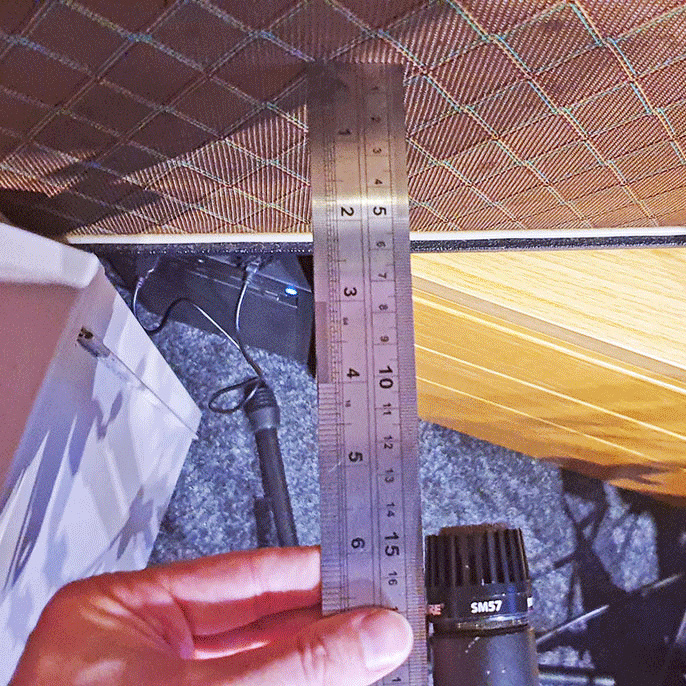
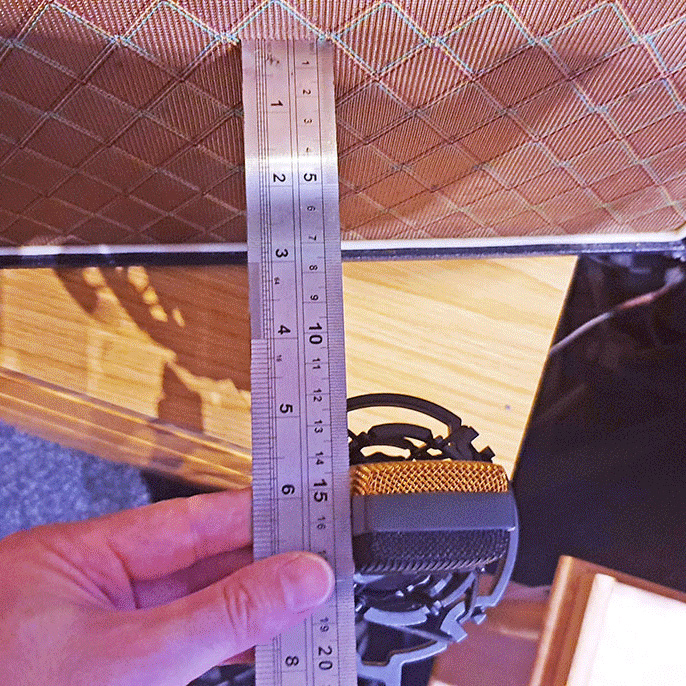
And so, with everything in place, I set a good tone and level for the amp, recorded a 2 minute guitar sequence consisting primarily of Killing Joke’s awesome “Requiem” riff, and set about comparing 19 different microphones, each run through a 7CA N72 preamp, and gain matched as closely as possible. This, as I would quickly discover, was an extraordinarily tedious process. Nevertheless, some time later I ended up with 19 separate recordings of the same guitar part. After I phase-aligned them all, finally I was ready to compare, one by one, each recorded signal played back through a single ADAM A7X studio speaker, with the raw sound of the amplifier, perched next to it.
Now, it’s worth pointing out the degree of fallibility for such an experiment, because while this certainly provides interesting insight into the degree to which different microphones affect the sound, ultimately we have to concede that there are elements of the playback signal path that themselves influence the resultant sound, most notably of course the playback speakers. While studio monitors are broadly considered to be “flat response”, in truth each set is subtly different, and therefore this difference is exerted on the sound we hear. This is something for which I am unable to account in my experiment, because to do so would involve trialling each recording through multiple pairs of speakers in multiple different environments (or in an anechoic chamber), and since such a procedure would be grossly impractical, I am happy to take it on faith that my A7Xs are truthful enough for me to have confidence in what I’m hearing. I’ve used them for long enough to feel happy with that.
The other stipulation is that, whilst I am able to show my findings by presenting each recording here for you all to hear (as I will shortly do), what I am unable to do is provide you with the same experience I had at the time in directly comparing the real sound of the amplifier to the recording, flipping back and forth between them. Because… well… how would I do that? I would have to load the AC30 into my car, drive to your house, set it up next to you and repeat the experiment in real time with you in witness. This presents all kinds of problems… Is there space in your house to do that? Do you live overseas? How would I get my car there? Could I get the day off work? Who would look after the cat?
You see… not easy at all. Anticipating this problem, the best I could do was to put a single microphone further back in the room and record the sound of the amplifier being compared with my recordings being played back. This is of course somewhat paradoxical, because I still have to record through a microphone in order to do that and thus incur all the peculiarities of that mic in the process, as well as all sorts of other problems such as room influence given the position of the playback speakers relative to the microphone, but at least it provides something approximating a basis for comparison. We have some context, albeit not the real-life, “you-really-had-to-be-there”, bona fide sort. I used a Telefunken CU-29 for this.

Okay. Enough.
Enough rambling on.
Like a twat.
Let’s hear them results!
So here is just a straight up mic comparison. For good measure I also included a version of the DI’d guitar recording run through Native Instruments’ Guitar Rig software, emulating an AC30 with settings approximating those on my amp, however I had to do a bit of fiddling to get close to what I was hearing through the amp, and so the settings in the software were nothing like the settings on the amp itself. Still though, it sounded… sort of close… sort of. I would recommend downloading these files and dropping them sequentially into consecutive DAW channels so that you can directly compare them in a more revealing way:
Native Instruments’ Guitar Rig
So, having completed these comparisons and sat in my studio chair flipping back and forth between the amplifier and each recorded signal, I was able to draw some conclusions. These can be summarised as follows:
- No one single mic can reproduce the sound of a harmonically rich guitar amplifier.
- The SM57 in particular is not a good choice for this application. It sounds thin, lacking in bottom end and definition.
- Large diaphragm condenser mics and ribbon mics are a more appropriate choice.
- The most convincing single microphone, if I had to pick one, is the Telefunken CU-29.
- I struggle to hear significant difference between a Royer R121 (£1300) and an MXL R144 (£120).
- The most convincing replication was produced by pairing microphones, typically a very dark mic and a very bright mic. My favourite combo was the MXL R144 + Panasonic WM61A or Audio Technica ATM450. Here’s what that sounded like:
MXL R144 + Audio Technica ATM450
The MXL R144 is a dark sounding ribbon mic capable of handling high enough SPL to sit quite comfortably in front of a guitar amplifier, and its proximity boost also serves to provide quite an Earth-shaking bottom end. The WM61A and ATM450 are both small diaphragm condenser microphones, which sound questionable on their own but combine nicely with a dark microphone to add detail and “fizz” to the signal. The WM61A actually refers to a cheap Panasonic capsule that can be easily made into a very basic omni-directional microphone. This means that the ideal guitar mic combo is actually comprised of two of the cheapest mics in the trial.
Let’s now take a listen to the amp/playback comparison, as recorded further back in the room by a single condenser microphone. Once again, I recommend downloading all files and comparing them within a DAW:
What I conclude from this is that, although there does not appear to be any perfect solution that offers a true reproduction of the source, the closest approximation is achieved by combining tonally distinct microphones and then blending them to taste, perhaps even making subtle adjustments to each of the mics (like rolling off a little top end from the ribbon mic). This then means that only small adjustments need be made, rather than relying on plugins to artificially butcher the sound later on.
So, to wrap up – turns out I was right all along! Well done me.


